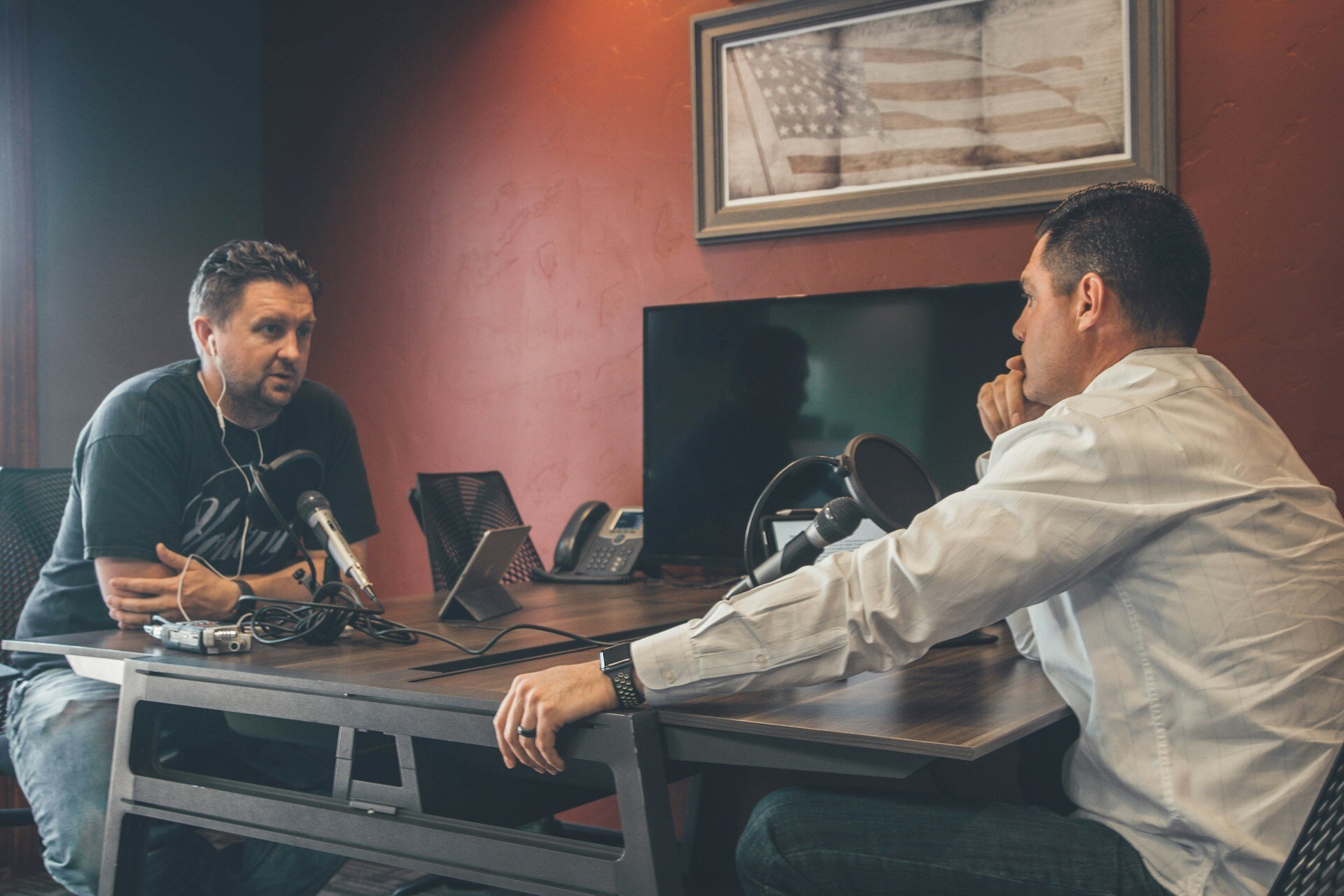In the ever-evolving landscape of digital communication, webinars have emerged as a powerful tool for connecting people across the globe. At WorkCast, we’ve seen how panel discussions, when executed well, can elevate a webinar from a standard presentation to an engaging, thought-provoking event. Bringing together experts to share insights and debate key issues, panel discussions offer a rich, multi-dimensional experience for participants.
However, the virtual format comes with its own set of challenges. How do you keep the audience engaged when they’re just one click away from distraction? How do you facilitate a lively discussion when everyone is separated by a screen? The key lies in thoughtful planning, effective moderation, and utilising the right tools to create an interactive environment.
In this blog, we’ll explore practical strategies and best practices for hosting successful webinar panel discussions. From choosing the right format to overcoming common challenges, we’ll guide you through the process of turning your next panel discussion into a memorable and impactful event.
What is a Webinar Panel Discussion
A webinar panel discussion brings together a group of experts to explore a topic from multiple angles, offering the audience a rich, multifaceted understanding of the subject at hand. Unlike in-person events, where the energy of the room can drive engagement, webinar panel discussions require careful planning and execution to keep the audience actively involved.
The key players in a webinar panel discussion are the host or moderator, the panellists, and, of course, the audience. The host’s role is to guide the conversation, ensure that all voices are heard, and seamlessly integrate audience questions and comments. The panellists, on the other hand, must not only bring their expertise to the table but also adapt their communication style to suit the virtual format.
The Benefits of Hosting Webinar Panel Discussions
Global Reach
Unlike traditional in-person events, webinars allow you to reach a global audience, breaking down geographical barriers and expanding your event’s impact.
Cost-Effective
With no need for a physical venue or travel arrangements, webinar panel discussions are a cost-effective way to bring together experts from around the world.
Flexible Engagement
Webinars offer various tools for audience interaction, such as live polls, chat features, and Q&A sessions, which can be used to keep participants engaged throughout the discussion.
Recording and On-demand
One of the biggest advantages of webinar panel discussions is the ability to record the session. This not only allows attendees to revisit the content but also enables those who couldn’t attend live to benefit from the discussion.
Key Elements of a Successful Webinar Panel Discussion
To host a truly engaging and successful webinar panel discussion, several elements need to be carefully considered.
Run a Webinar Tech Check
Before the webinar, ensure that all panellists have a stable internet connection, functioning microphones, and cameras. Conduct a rehearsal to familiarise everyone with the platform’s features and iron out any technical issues.
Clear Objectives
Define the goals of your panel discussion. What do you want the audience to take away from the conversation? Clear objectives will help keep the discussion focused and relevant.
Effective Moderation
The moderator plays a crucial role in guiding the conversation, ensuring that all panellists contribute, and integrating audience questions seamlessly. A good moderator knows when to steer the discussion back on track and how to encourage quieter panellists to share their insights.
Audience Engagement Tools
Make the most of the interactive features available on your webinar platform. Use live polls to gauge audience opinions, encourage questions through the chat function, and set aside dedicated time for Q&A. Engaging the audience throughout the discussion is key to maintaining their interest and participation.
Webinar Panel Discussion Formats
The format of a panel discussion can significantly influence its flow, level of audience engagement, and overall effectiveness. Choosing the right format depends on your goals, the expertise of your panellists, and the preferences of your audience. Here are some popular formats to consider for your next webinar panel discussion.
The Classic Q&A
- Overview: This traditional format involves the moderator asking pre-prepared questions to the panellists, who then share their insights and opinions.
- Best For: Discussions where the audience is looking for in-depth knowledge on specific questions or when exploring complex topics that require detailed explanations.
- Tips: Encourage the panellists to keep their answers concise to allow time for audience questions towards the end.
The Round-Robin
- Overview: In this format, the moderator poses a question to all panellists, with each panellist taking turns to answer. This format ensures that each panellist has an equal opportunity to contribute.
- Best For: Situations where you want to ensure a balanced discussion and equal participation from all panellists.
- Tips: The moderator should manage time carefully to ensure the discussion remains on track and all questions are covered.
The Fishbowl
- Overview: The fishbowl format involves a smaller group of panellists (the “fish”) who discuss the topic while other panellists and the audience observe. At certain points, the observing panellists or audience members can join the “fish” to contribute.
- Best For: Interactive discussions where audience participation is encouraged, or when you want to explore a topic from multiple angles.
- Tips: Use this format to dive deep into specific subtopics, giving both panellists and the audience a chance to engage more dynamically.
The Ligntening Round
- Overview: In this fast-paced format, the moderator asks a series of rapid-fire questions, and each panellist has a limited time (e.g., 30 seconds) to respond.
- Best For: Topics where quick, diverse opinions are valuable, or when you want to maintain a high energy level throughout the discussion.
- Tips: Prepare concise, thought-provoking questions in advance, and remind panellists to keep their responses brief and to the point.
The Debate
- Overview: This format features two or more panellists who present opposing views on a topic, with the moderator facilitating the debate.
- Best For: Controversial topics or when you want to explore different sides of an issue in-depth.
- Tips: Ensure that the moderator remains neutral, guiding the discussion to maintain a respectful and constructive tone.
The Case Study
- Overview: Panellists discuss real-life scenarios or case studies relevant to the webinar topic, providing their analysis and recommendations.
- Best For: Practical, industry-specific webinars where the audience can benefit from real-world applications and examples.
- Tips: Choose case studies that are directly relevant to your audience and encourage panellists to offer actionable insights.
Selecting the appropriate format for your webinar panel discussion is crucial for achieving your objectives and keeping your audience engaged. Consider the topic, the expertise of your panellists, and what format will best facilitate an informative and dynamic conversation.
Overcoming Common Challenges
Webinar panel discussions come with their own set of challenges, but with the right strategies, these can be easily overcome.
Technical Glitches
Even with the best preparation, technical issues can arise. Have a tech support team on standby and conduct pre-webinar checks to minimise disruptions.
Limited Audience Interaction
Virtual environments can sometimes feel less engaging. Use interactive tools effectively and encourage panellists to address the audience directly to create a more inclusive atmosphere. You can also have a back up plan here and create some seed questions.
Dominating Panelists
It’s important for the moderator to ensure that no single panellist dominates the conversation. Encouraging balanced participation will result in a richer, more diverse discussion.
Managing Time Zones
When hosting a global webinar, time zones can be a challenge. Consider scheduling the event at a time that is most convenient for the majority of your audience and panellists, or offer a recorded version for those who can’t attend live.
Tips for Webinar Panelists
As a panellist, your contribution is critical to the success of the webinar. Here are a few tips to ensure your participation is effective.
Know the Platform
Familiarise yourself with the webinar platform’s features ahead of time. This will help you feel more confident and enable you to focus on the discussion rather than technical details.
Engage with the Audience
In a virtual setting, it’s important to make a connection with the audience. Look into the camera, address participants directly, and be responsive to their questions and comments.
Be Concise and Clear
Virtual attention spans can be shorter than in-person events. Aim to communicate your points clearly and concisely to maintain the audience’s attention.
Minimise Distractions
Ensure you are in a quiet environment, free from interruptions, to maintain a professional atmosphere throughout the discussion.
Round-Up
Webinar panel discussions offer a powerful platform for exchanging ideas, engaging with a global audience, and exploring topics in depth. By focusing on technical preparation, clear objectives, effective moderation, and audience engagement, you can create a compelling and impactful virtual discussion.
At WorkCast, we are committed to helping you host successful webinar panel discussions that resonate with your audience and achieve your goals. Whether you’re planning your first webinar or looking to refine your approach, the strategies outlined here will set you on the path to success.
Ready to host your next webinar panel discussion? Get started with WorkCast today and take advantage of our comprehensive platform designed to make your virtual events seamless and engaging.
Share this
You May Also Like
These Related Stories

How Does a Webinar Work?
.jpg)
How To Run A Webinar in 5 Easy Steps



